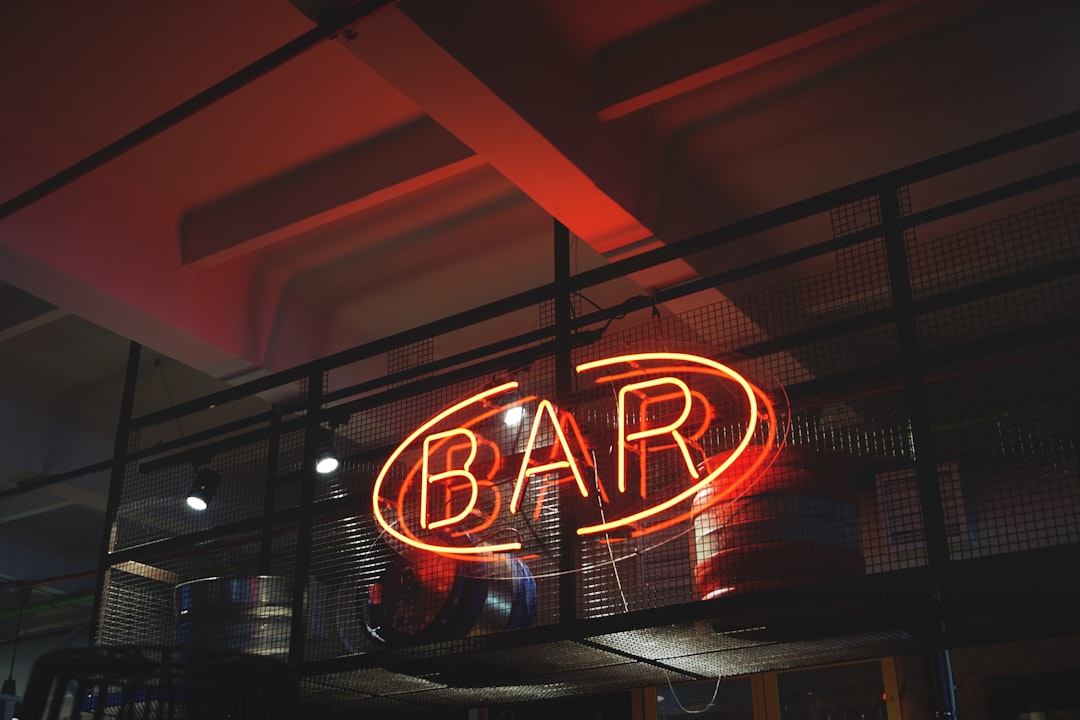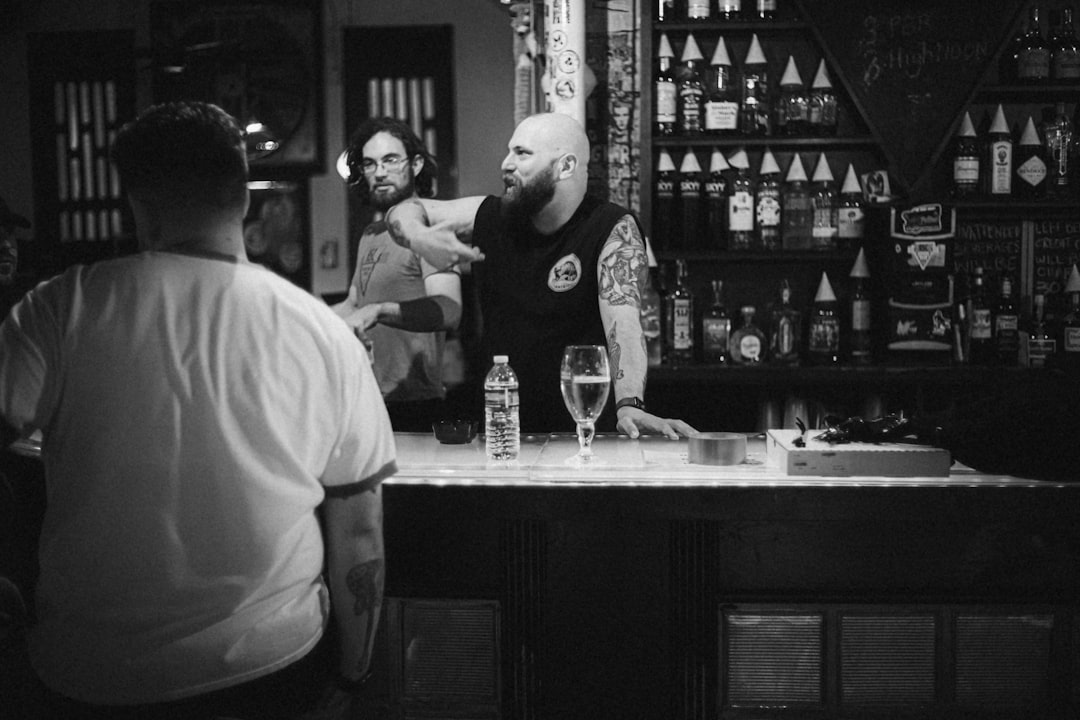

Engage prospects with a scan and streamline customer engagement with FREE QR code marketing tools by Sona – no strings attached!
Create a Free QR CodeFree consultation

No commitment

Engage prospects with a scan and streamline customer engagement with FREE QR code marketing tools by Sona – no strings attached!
Create a Free QR CodeFree consultation

No commitment
In today’s digitally driven world, QR codes have evolved from a novelty to a strategic powerhouse in bridging offline engagement with online action. For bartending schools, QR codes represent a fun, frictionless, and surprisingly effective way to boost student feedback collection and engagement without requiring an app download or complex setup.
Bartending courses increasingly rely on both in-person and online touchpoints, making it crucial to find seamless methods to gather student input on training modules, facilities, and instructor performance. Yet, many valuable perspectives are missed because feedback methods are disconnected or too cumbersome, leading to blind spots in course evaluation and student satisfaction.
By incorporating QR codes at every step, from class sign-ins to post-course surveys, bartending schools can streamline the feedback process and reduce the risk of missed insights. These codes turn fleeting interactions into trackable data, helping identify high-value students who might otherwise go untracked and ensuring no opportunity for course improvement or engagement is lost. This guide explores how to harness QR technology for actionable outcomes and better student experiences in bartending education.

QR codes bridge the gap between physical touchpoints and digital outcomes, making it easier to achieve real goals like increasing student feedback and optimizing workflow. In bartending schools, outdated processes such as paper surveys, clipboard sign-up sheets, and email-only follow-ups often fall short because they rely on later action. Students are most motivated to share insights at the moment of experience, which means capturing feedback in the classroom, at the tasting bar, and during events is essential.
Replacing analog paperwork with QR-enabled flows creates a modern, app-free path to share opinions, report issues, and register interest. When a student scans a code next to the speed rack to rate bar layout, your team gets instant insight. When a graduate scans a code at commencement to submit a testimonial, your marketing team receives high-quality, ready-to-use content. With platforms like Sona QR, you can automate code creation, manage destinations, and sync scan activity to your CRM for timely follow-up.

Bartending schools encounter unique feedback challenges across hands-on training, certification readiness, and event-driven learning. QR codes offer a simple mechanism to convert moments of interest into structured feedback while building a clearer picture of student experience. They shortcut the friction that often prevents students from sharing observations about technique instruction, bar ergonomics, or service standards until it is too late to act.
By making feedback collection effortless and immediate, QR codes create higher data volume and better data quality. The result is a feedback loop that reveals what is working, what needs attention, and who is highly engaged. These signals inform instructor coaching, curriculum updates, facilities planning, and marketing decisions.
Example: QR codes placed on graduation feedback cards can trigger short satisfaction surveys, NPS scoring, and optional testimonial submissions. Staff can spot rising satisfaction trends live and request permission to use quotes in marketing while enthusiasm is high.

Bartending programs serve varied audiences: prospective students, current enrollees, alumni, and employer partners. Each audience benefits from different actions made possible by the right QR format. From quick surveys and instructor ratings to RSVP forms and alumni referrals, you can tailor destinations to your objectives and update them over time.
Choosing formats with purpose simplifies your workflows. For example, use web link codes for post-class surveys, vCards for admissions counselors, SMS codes for last-minute event reminders, and app download links for learning tools or job boards. Sona QR centralizes creation and management so you do not lose track of which code points where.
Dynamic forms and event feedback codes are especially powerful at hands-on sessions. For instance, a QR placed next to new cocktail stations can capture ratings on taste, technique difficulty, and perceived job relevance, turning an unmeasured moment into actionable curriculum intelligence.
Every day, bartending schools create dozens of moments where students form opinions or express intent. Without a simple way to respond in the moment, many of these signals vanish. QR codes transform these everyday interactions into measurable growth opportunities, from streamlining sign-ins to capturing alumni enthusiasm at graduation.
The key is to place codes where motivation is already high and context is clear. Mapping the student journey, then aligning QR prompts to those touchpoints, reduces friction and raises participation. Over time, scan data highlights which placements produce the most valuable insights and where to double down.
With intentional placement and clear CTAs, every student touchpoint becomes a high-signal opportunity to improve experience, measure satisfaction, and nurture the next cohort.

Many schools generate strong interest during demos and events, yet a fraction of that interest becomes structured feedback or engagement data. QR codes change the equation by making it effortless to record student impressions and route people into the right next step. When use cases are mapped to specific interactions, each scan becomes a meaningful data point.
Focus on moments with high attention and emotional energy: after a successful cocktail build, while practicing customer service scripts, during competitions, or at graduation. Design short, mobile-first forms and pair them with concise CTAs, then use dynamic codes to iterate without reprinting.
By linking offline moments to digital actions, every scan contributes to operational decisions and strategic planning across instruction, facilities, and marketing.
Each QR scan captures intent, timing, and context. When you deploy unique codes at key touchpoints, you create a living map of engagement. This structure supports segmentation and retargeting that reflects a student’s actual behavior. Rather than guessing who wants what, you route the right message to the right person at the right time.
In education, audience distinctions matter. Prospective students need proof of outcomes, current enrollees need support and enrichment, and alumni need reasons to stay involved. With Sona QR, scan data syncs directly to your CRM, which makes it simple to segment and automate next steps across email, SMS, and ads.
With automated data syncing and clear tagging, scanned leads are attributed accurately, and every follow-up matches the student’s place in the journey.
Disconnected marketing wastes effort and budget. QR codes unify the offline and online experience by providing a clear, trackable next step from any physical asset or live moment. When a prospective student scans a brochure at a career expo or a current student scans a hallway poster after a flair session, your systems can respond instantly with content that advances their journey.
QR codes also make traditional channels measurable. You can compare scans across menus, posters, direct mail, and digital signage to see which assets drive action. With a centralized platform like Sona QR, you can manage destinations, monitor performance, and sync events with your CRM so every channel works together.
When every asset offers an immediate, measurable action, your marketing mix becomes a coordinated system that captures demand and advances students through the funnel.
A strong QR strategy starts with planning; see this video tutorial to get started. Clarify your objective, choose the right code type, and ensure your design aligns with the physical environment. Then deploy in high-impact areas and monitor results so you can refine quickly. Consistent iteration, not one-time setup, is what unlocks ongoing value.
Use this checklist to move from concept to results without guesswork. Each step includes practical tips for bartending schools, from classroom scanning conditions to event-day staffing. With tools like Sona QR, you can generate codes in minutes and see performance trends in real time.
QR codes are not simply engagement tools. They are a gateway to measurable outcomes, from improving student satisfaction to driving enrollments and event attendance. The ability to connect scan behavior with follow-up actions is critical for proving impact and optimizing spend.
Without analytics, it is hard to know which assets work, which instructors need support, or which events generate real interest. With Sona QR and Sona, you can capture scan data, unify it with your CRM, and attribute downstream outcomes to specific touchpoints. This creates a performance baseline for continuous improvement.
The result is a closed-loop system where QR engagement translates into data you can act on, which makes QR a core component of your performance strategy.
Many schools adopt QR codes but do not extract full value because codes are not uniquely tagged, performance is not measured, or follow-up is not automated. The following tactics help you scale impact and maintain momentum while preserving a cohesive student experience.
Focus on the media your students see most often: classroom signage, menus, event materials, and direct mail for prospects. Combine clear CTAs with automation that delivers immediate value. When students see a benefit after the first scan, they are more likely to scan again.
Start creating QR codes for free. Getting started quickly makes it easier to win early buy-in and demonstrate results.

Schools that implement QR strategies report measurable gains in feedback volume, testimonial quality, and enrollment attribution. Success often starts with replacing a single analog workflow, then expands once stakeholders see how easy and effective scanning can be.
Creative placements also spark curiosity and participation. Codes near high-traffic, high-energy areas tend to perform best. Pairing scans with micro-rewards such as recipe downloads or workshop discounts further boosts response rates and goodwill.
These examples prove that QR codes are not just tools for sign-ups. They are catalysts for richer student participation and institutional learning.
To maximize QR impact, build a culture of scanning and reinforce that participation results in visible improvements. When students see changes made from their feedback, trust grows and response rates rise. Small design and placement details also matter significantly in bar-like environments where lighting and reflections can interfere with phone cameras.
Avoid common mistakes like placing codes in dim corners, using low-contrast designs, or sending scanners to long, unoptimized forms. Prioritize short, mobile-first experiences and preview them under real-world conditions to remove friction before launch.
QR codes are more than a shortcut, they form the backbone of a feedback strategy that helps bartending schools convert every student interaction into actionable insight. By capturing data from every moment, whether in class, at events, or through marketing materials, schools prevent prospects, students, and alumni from slipping through the cracks and ensure critical feedback is collected and analyzed.
These tools convert each scan into a measurable signal, unlocking a full-cycle view of the student journey. With robust tracking, seamless CRM integration, and analytics that surface engagement signals, bartending schools can address long-standing gaps, reduce missed opportunities, and deliver consistent messaging.
The outcome is a responsive, continuously improving institution that powers stronger recruitment, deeper engagement, and sustainable growth in a competitive industry. Platforms like Sona QR and Sona.com support this evolution end to end, from code generation and campaign orchestration to attribution and pipeline impact, so your team can turn every scan into progress.
QR codes have revolutionized bartending schools by transforming feedback collection into an effortless, real-time process that drives continuous improvement. Beyond simply gathering opinions, they empower educators to enhance student engagement, tailor curricula, and elevate training outcomes—all while streamlining administrative tasks. Imagine instantly knowing which teaching methods resonate most, enabling you to refine classes on the fly and deliver an exceptional learning experience.
With Sona QR, you can create dynamic, trackable QR codes in seconds, update feedback campaigns without reprinting materials, and connect every scan to actionable insights. This means no missed feedback opportunities and the ability to measure and improve every aspect of your bartending program with confidence. Start for free with Sona QR today and turn every scan into valuable feedback that shapes the future of your bartending school.
Bartending schools can use QR codes placed at key locations like classrooms, tasting bars, and events to collect immediate, app-free student feedback through surveys and ratings.
QR codes simplify and speed up feedback by enabling students to scan and submit responses instantly without paperwork or app downloads, resulting in higher response rates and better data quality.
Useful QR code types include dynamic web links for surveys, vCards for contact sharing, SMS triggers for event reminders, RSVP and check-in codes, and app download links for learning tools.
QR codes should be placed at classroom entry points, event flyers, certification packets, point-of-sale materials, campus signage, digital screens, and direct mail to capture feedback and interest effectively.
By deploying unique, tagged QR codes at different student journey stages, schools can segment audiences, sync scan data with CRMs, and deliver targeted follow-ups through email, SMS, and ads.
Best practices include setting clear goals, choosing dynamic codes, branding the code with logos and colors, writing benefit-led calls to action, testing scanning conditions, and deploying codes in high-visibility areas.
Schools track scan counts, completion rates, location, device, and time data, integrate scan data with CRM systems, and use dashboards to monitor engagement and adjust campaigns in real time.
Schools should avoid placing codes in dim or cluttered areas, using low-contrast designs, directing scanners to long forms, and failing to test scanning under real conditions.
Increasing participation can be achieved by offering meaningful incentives, educating staff to encourage scanning, using multiple code placements, and ensuring quick, easy-to-complete mobile forms.
QR codes unify offline and online marketing channels by providing measurable, trackable actions from print, signage, events, and digital assets that drive student engagement and enrollment.
Use Sona QR's trackable codes to improve customer acquisition and engagement today.
Create Your FREE Trackable QR Code in SecondsJoin results-focused teams combining Sona Platform automation with advanced Google Ads strategies to scale lead generation

Connect your existing CRM

Free Account Enrichment

No setup fees
No commitment required

Free consultation

Get a custom Google Ads roadmap for your business






Launch campaigns that generate qualified leads in 30 days or less.
